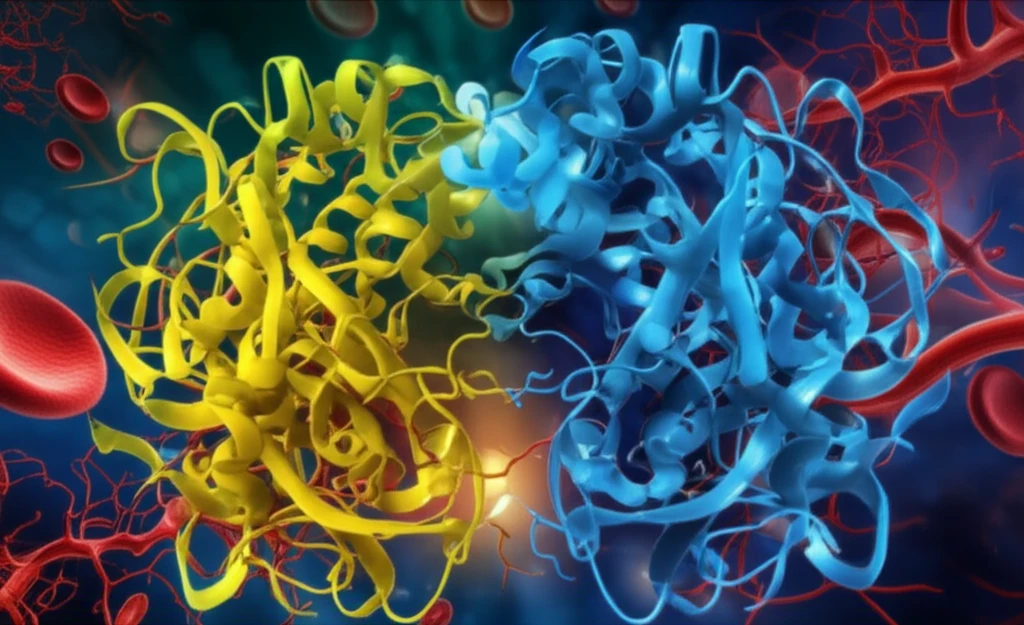
Unlock Your Body's Natural Healer: How Orexin-A and Heme Oxygenase-1 Team Up for Better Health
"Discover the surprising link between these powerful molecules and how they could revolutionize treatments for vascular diseases and beyond."
Our bodies are complex networks of biological processes, many of which operate behind the scenes to keep us healthy and functioning. Among these are the actions of Orexin-A and Heme Oxygenase-1 (HO-1), two molecules that have garnered significant attention in the scientific community for their potential to promote blood vessel growth (angiogenesis) and protect our cells.
Orexin-A, a neuropeptide hormone primarily known for its role in regulating sleep-wake cycles and appetite, has recently been discovered to possess a range of other important functions, including stimulating angiogenesis. Angiogenesis, the formation of new blood vessels from pre-existing ones, is vital for numerous physiological processes, such as wound healing and tissue repair.
Heme Oxygenase-1 (HO-1) is an enzyme known for its protective effects on cells. It helps cells survive and reduces inflammation. When the body faces stress, HO-1 increases to protect blood vessels by controlling cell activation and preventing cell death. This makes HO-1 very important for keeping our vascular system healthy and balanced.
The Dynamic Duo: Orexin-A and HO-1 Work Together

Recent research has illuminated a fascinating interplay between Orexin-A and HO-1. Studies show that Orexin-A actually boosts the expression and activity of HO-1 in vascular endothelial cells, which are the cells lining the inner surface of blood vessels. This discovery suggests that Orexin-A's angiogenic effects might be mediated, at least in part, by HO-1.
- Orexin-A Boosts HO-1: Orexin-A significantly increased both the expression and activity of HO-1 in HUVECs.
- Blocking HO-1 Stops Angiogenesis: When HO-1 was inhibited using a specific compound called tin protoporphyrin-IX (SnPP), the angiogenic effects of Orexin-A were significantly reduced. This was observed both in vitro (in cell cultures) and in vivo (in living organisms).
- Tube Formation and Cell Movement: SnPP also blocked the ability of endothelial cells to form new tubes, a crucial step in angiogenesis. Furthermore, it reduced the movement of these cells, indicating that HO-1 is essential for Orexin-A to promote blood vessel growth.
Future Directions and Therapeutic Potential
This research provides a compelling rationale for further exploration of the Orexin-A/HO-1 pathway. By understanding the intricate details of this interaction, scientists may be able to develop novel therapeutic strategies for a range of conditions, including cardiovascular diseases, wound healing, and even cancer. Further studies are necessary to fully elucidate the mechanisms involved and to translate these findings into effective clinical treatments. With continued research, the Orexin-A/HO-1 axis holds immense promise for improving human health and well-being.
